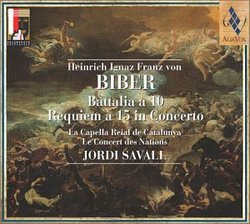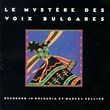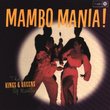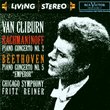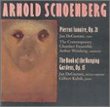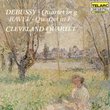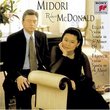A stunning achievement
Steven Guy | Croydon, South Australia | 03/11/2007
(5 out of 5 stars)
"The Battalia à 10 is played with great style and charm here. I like the use of two theorbos and a harpsichord and organ on the continuo lines. I have several recordings of this work. Savall's approach is a little more polite than Goebel's and a little more atmospheric than Philip Pickett's quite raw sound. I like all of them. Savall's is, perhaps, the most beautiful recording, even though it doesn't take advantage of the musical effects Biber suggests with as much relish as Goebel or Pickett.
The A Major Requiem à 15 in Concerto is a favourite of mine and the only other recording I've ever heard is Ton Koopman's with his Amsterdam Baroque Orchestra & Choir on ERATO. I've loved Koopman's recording ever since I bought it, shortly after it was released in the 1990s. It was coupled with the magnificent Vesperæ à 32 voci. I was eager to hear another recording of this little known work. Only two requiems by Biber have survived, this one, in A major and the F minor Requiem. Both are masterpieces and each takes a different approach. The A Major work features trumpets, trombones, timpani, oboes (perhaps added later?), dulcian [fagotto], strings and, of course, basso continuo. The F minor work uses strings, two dulcians, three trombones, and multiple organs and is a much more sombre and darker work.
Savall's recording was made in Salzburg Cathedral and takes advantage of four of the organs in there. The sound is beautiful and splendid and, indeed, moving. We are transported to a beautiful world without pain - a glimpse of Heaven, in fact. The opening Marcia Funebre gives one the opportunity to wind and brass of Le Concert des Nations in the Salsburg Cathedral space. What a sound! It is worth buying the disc for the March alone. The Requiem in Concerto which follows is a beautiful and radiant work - full of hope for the afterlife and great grace and beauty.
I hope Jordi Savall and his ensembles, La Capella Reial de Catalunya and Le Concert des Nations, get around to recording the deep, dark and sober Requiem in F minor some time soon.
This current disc is highly recommended by me.
"
Half Entertainment, Half Exaltation
Giordano Bruno | Wherever I am, I am. | 12/01/2007
(5 out of 5 stars)
"The Battalia is pure entertainment, a series of musical vignettes and jokes based on a traditional of battle-sounds in music stretching across the Renaissance from Jannequin to Gabrieli into the late Baroque. There must be at least two dozen Battalias in the repertoire, but Biber took it farther and made it more elegant than anyone. Jordi Savall's performance of it stresses the stylized elegance and makes it a joy to hear again, like seeing a old friend in new clothes.
The Requiem is naturally a much deeper piece of music. This is a requiem of pomp and circumstance, a graduation as it were into celebrity death. I prefer Savall's interpretation of this particular Biber masterwork to any other I've heard, for its full-bodied version of the spirit. Recorded in the acoustically bizarre Salzburg Cathedral, it offers challenges to the world of digital acoustics, but the engineers have come closer to making the voices sound human than some of the other recent productions of huge-scale Biber compositions. Personally I find this and other such grandiose choral music easier to hear on good headphones than on the best stereo speakers.
If you are just meeting Jordi Savall for the first time, you should know that he is the world's foremost virtuoso on the viola da gamba. His recordings of French and Spanish chamber music for gamba and continuo, and for gambas in duet, are superb, and perhaps will entice more frequent listening than such super-human music as Biber's requiems and celebratory masses. Chacun a son gout or something like that."
Jordi Savall maintains his standards
A. Meurer | Melbourne Australia | 05/10/2008
(4 out of 5 stars)
"Having decidex to order Paul McCreesh and Reinhard Goebel and their groups in their combined performance of Biber's Missa Salisbergensis I was intrigued by the suggestion of this recording as a suitable match.
In the main Jordi Savall's work under the Alia Vox label is consistently superb, and this is no exception. It is an excellent recording, with great depth and a sense of the venue - the Salzberg Cathedral that is the subject of the Missa, even though the Missa was actually recorded in an English abbey.
Untill now Biber was something of a fringe composerin my experience, and I had no real appreciation of the striking beauty of his writing. The first piece, the Battaglia, shows Biber's sense of observation and willingness to experiment, with one section of intended dissonance, not something I've usually associated with the Baroque.
The second, a Mass, is really magnificent, brimming with invention.
For anyone with an interest in Biber, and familiarity with the quality of Jordi Savall's approach to recording this recording is a must.Requiem a 15 in Concerto / Battalia a 10"
